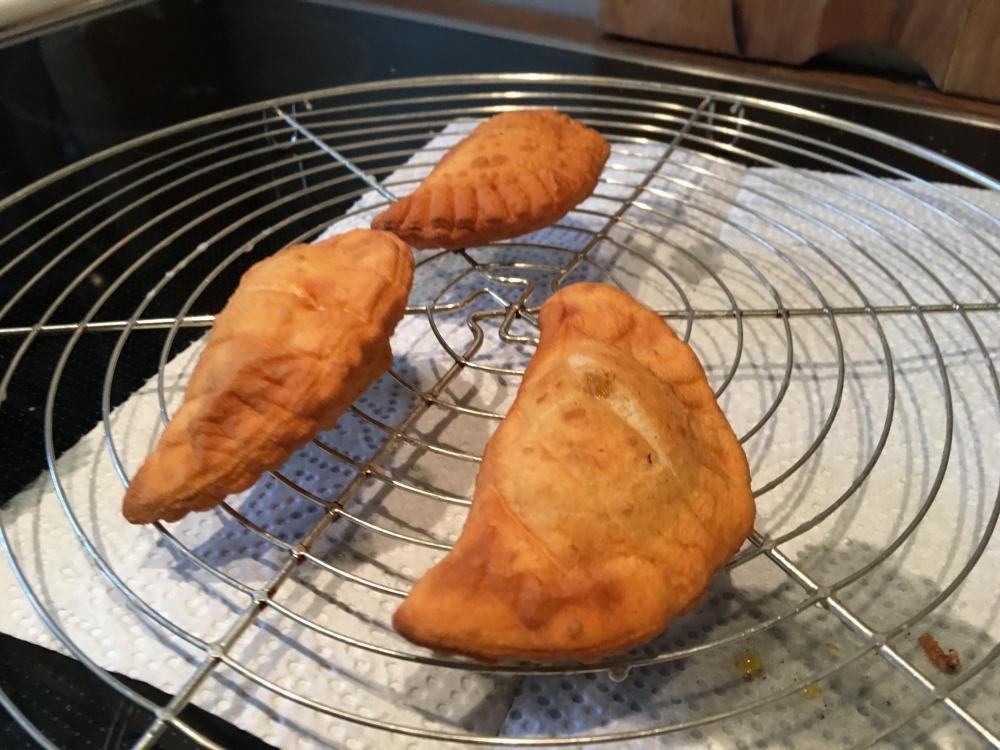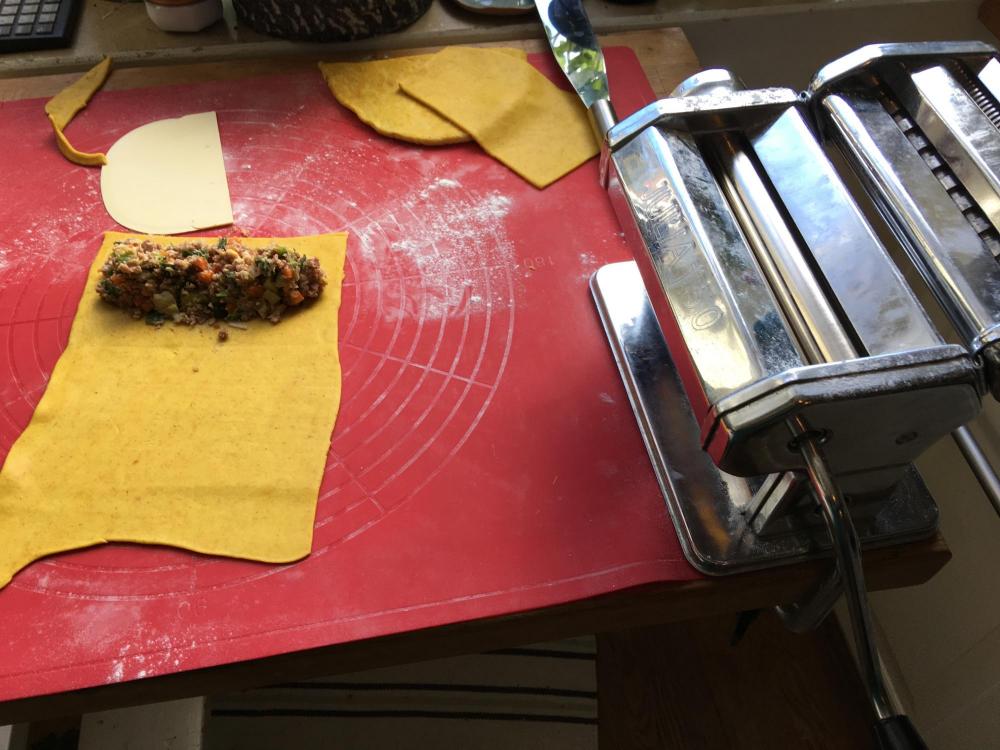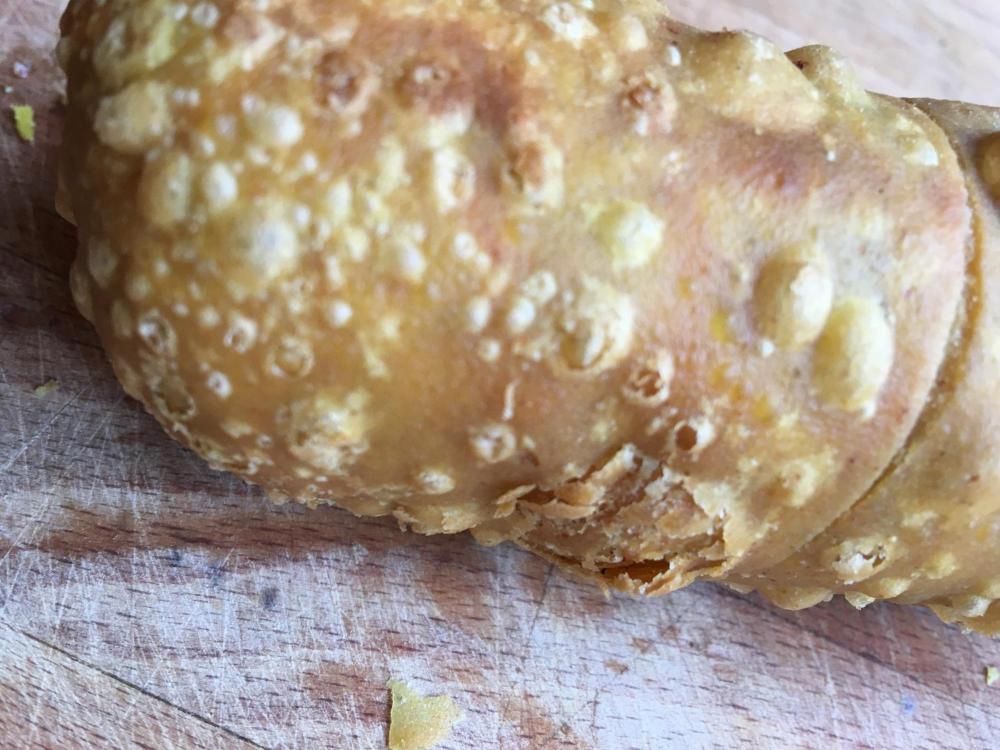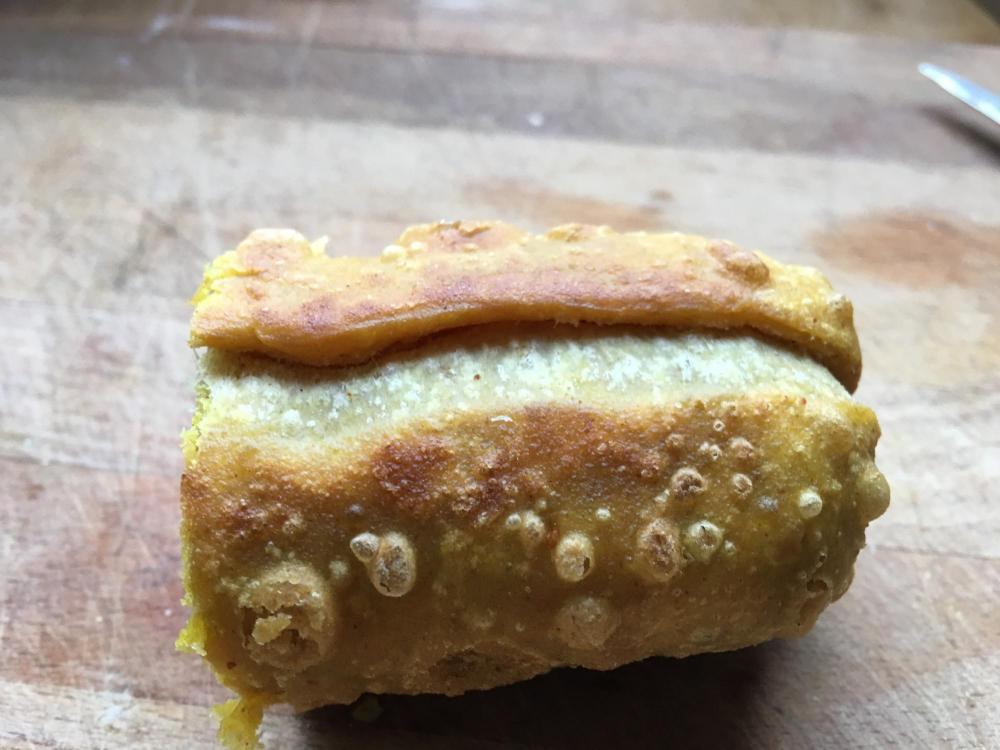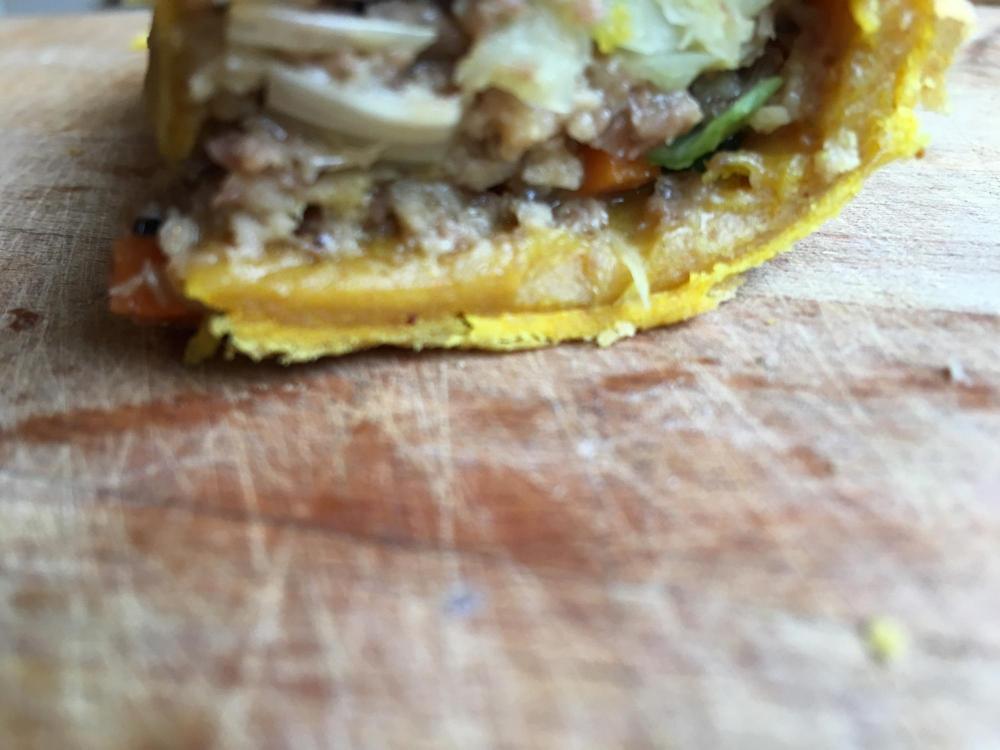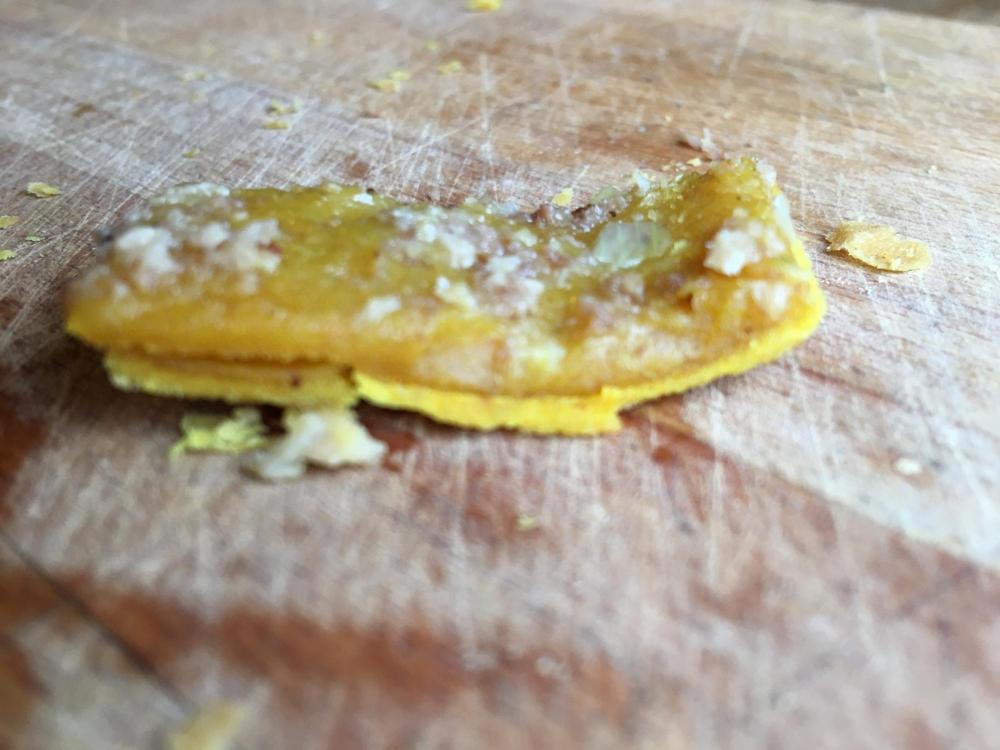1 hour ago, Lisa Shock said:Here in the US, we have several TV shows that go inside factories and show various consumer goods and foods being produced.
Good suggestions, Lisa. I have tried to find some videos, indeed I did find one about Simplot Australia, but unfortunately it was rather cautious about showing various product under manufacture, and was no help in this case.
In what proportion is the Lecithin used in pastry doughs? That would be a useful ratio for determining a rough percentage of it in this product.
In the meantime here are a few pics from the last few days efforts:
Theme & Variations in basic egg batter dough.
Simple samples for frying
Nice dough, but the wrong texture. splits occurred due to sitting on a rack prior to frying.
Lecithin In dough. Today's Effort.
The setup. Pasta dough sheeter for rolling dough 15cm wide. Substituted tumeric and sweet paprica for the food coloring. Too yellow! Did lend a nice Indian-esque taste to the pastry though.
Surface response to frying. Still not right.
The seam here tended to pull apart as the tube and contents heated up. It occurs to me that the painted end serve a very particular purpose. I've always wondered why they always seemed a little broken open? Perhaps they're acting as pressure relief vales to stop the seam from splitting?
This time I decided to knock up some savoury filling to snack on along the way. Note the variation in doneness of the dough.
The dough was double rolled resulting an an inner and outer layer, which on one roll split completely. However, it is starting to lookp romising as to how the real product's dough has a similar variation in doneness.
Notes: Pastry outer was crisp and as you would expect from a really short dough that's been fried, thus is not like the original. The surface of the original appears, now, to not have been produced as an effect of frying: there are too many crags to the surface to be accountable to just blister formation.
Tumeric is not a substitute for synthetic food coloring, plus I feel it quite a lot effective, too effective in this case. In future efforts, I'll leave the coloring out completely.
The tubes need to have the ends painted rather than crimped closed as steam inside the tube tends to work against the sealing of the seam.
Have to try this again, with a thicker dough sheet, and also substituting egg yolk for lecithin. But how to get the texture?



